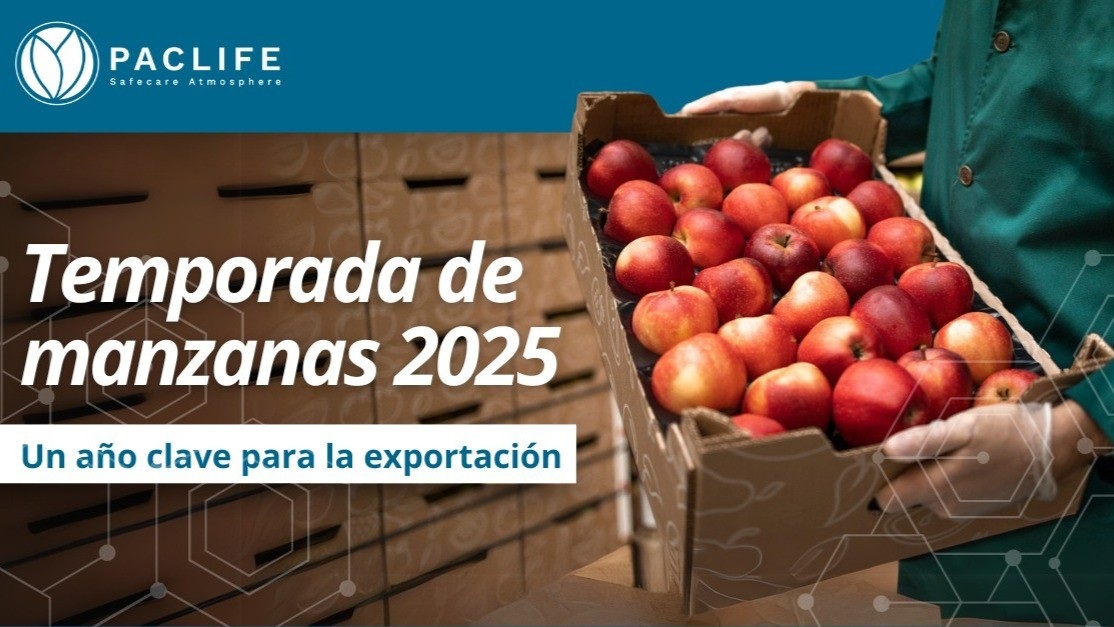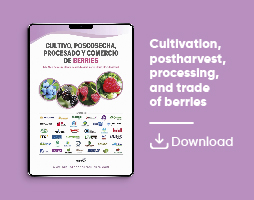

Paclife
Packaging
Modified Atmosphere Packaging: The Key to Controlling Browning in Cherries
Paclife presents innovative MAP solutions that reduce browning and improve the quality of Regina cherries in international markets
.jpg)
In the cherry export industry, particularly with delicate varieties like Regina, preserving both color and flavor is essential. Paclife's Post-Harvest Department is dedicated to investigating and understanding the factors that lead to common issues such as pulp browning and sour taste, which are often observed in this variety. Regina cherries, with their higher metabolism and propensity to browning, face considerable challenges in maintaining quality and achieving acceptance in international markets. A critical solution to these challenges in the postharvest phase is the precise control of gases within an advanced packaging system. This approach is crucial for preserving the fruit’s freshness and quality throughout its journey to the final destination.
Benefits of Paclife’s MAP Packaging
Another critical factor in preserving Regina cherries is the permeability of the bags, which are specially designed to meet the unique needs of this variety. Maintaining a balanced atmosphere of oxygen (O₂) and carbon dioxide (CO₂) is essential for significantly reducing browning, a common issue with this fruit. However, high-humidity bags alone are insufficient, as they only prevent dehydration without directly preserving the fruit’s freshness. Paclife has developed an intelligent solution that creates this controlled atmosphere by precisely adjusting gas levels. Research has demonstrated that higher CO₂ concentrations in the packaging delay ripening and extend shelf life, while controlling O₂ levels is crucial to minimizing internal browning and loss of firmness, ensuring the cherries' quality throughout transport and storage.
By developing smart packaging that integrates permeability modeling tailored to the product's respiration rate with the use of zeolite, we are able to maintain more controlled oxygen levels, even under suboptimal handling conditions. This approach is especially crucial in the face of thermal fluctuations during transit or at the final destination, as it prevents fermentation and significantly reduces the incidence of browning. In summary, the precise management of low oxygen levels is vital for preserving the fruit's quality, ensuring it reaches the final consumer in optimal condition.
Graph 1 illustrates the gas curves (oxygen and carbon dioxide) for the Regina variety during a 45-day storage period at 0°C, followed by a temperature shift to ambient temperature for 72 hours.
Treatment T0 (PacLife MAP) demonstrates an exceptional ability to maintain stable gas levels during the initial days of packaging, achieving reliable results even after cold storage and thermal break tests. In contrast, T1 (high-humidity MAP packaging) shows limited formation of a controlled atmosphere in the first few days. Despite this initial condition, gas levels reach hazardous values during the thermal break. Lastly, T2 (MAP packaging without PacLife technology) maintains stable gas formation during the first days but fails to withstand thermal fluctuations, resulting in dangerously high levels of oxygen and carbon dioxide. These two treatments highlight that it is not sufficient to base gas control solely on the number of perforations in the packaging; the permeability and the technology used in its design are critical to ensuring proper product preservation.
Browning in Regina cherries is influenced by several factors, including temperature, respiration rate, skin damage, acidity, and pH, all of which directly impact both the flavor and appearance of the fruit. For instance, when the pH is either too high or too low, the activity of polyphenol oxidase (PPO) increases, triggering the browning reaction in the pulp.
In recent years, Paclife has invested in research to better understand these conditions and develop packaging solutions tailored to the specific needs of each variety. Thanks to packaging designed with its patented technology, Paclife has significantly reduced the incidence of browning and improved the appearance of the pedicel, keeping it green and fresh. This is a crucial quality indicator in demanding markets such as China.
The following photographs present a comparison of the results from Graph 1, highlighting the lower incidence of browning in the PacLife MAP treatment (T0). The differences observed are statistically significant in both cold storage and thermal break evaluations, as detailed in Table 1.
With these advancements, Paclife remains at the forefront of smart packaging innovation, supported by rigorous statistical analysis and empirical data, offering customized and effective solutions for every need. The precise management of gases has become a crucial element in cherry preservation, and packaging specifically designed for the Regina variety has proven essential in maintaining its quality, freshness, and distinctive flavor until it reaches the final consumer.
Furthermore, each year we expand the evaluation parameters in our research, applying them to different fruits with outstanding results. For example, with D'Agen plums and Cherry Plums, we have made significant advancements that have been highly appreciated by our customers and the industry. These innovations reinforce the role of our research and post-harvest department as a strategic pillar in understanding and meeting the growing demands of the agri-food sector.
















